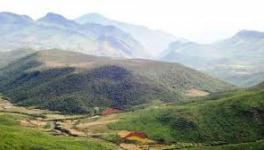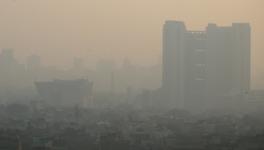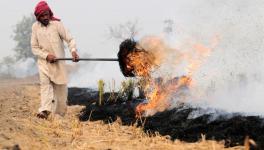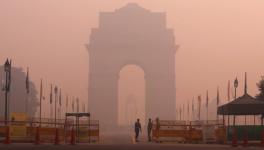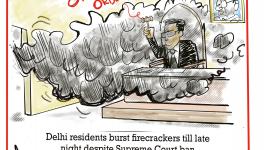Winter Air Pollution Higher in Smaller Towns in Indo-Gangetic Plains: CSE Report
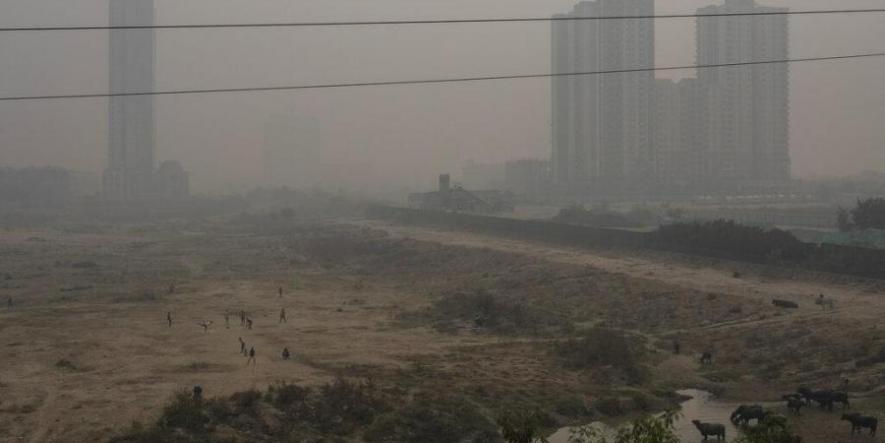
Image Courtesy: AP
According to a recently released report by the Centre for Science and Environment, the air quality has worsened in smaller towns in the Indo-Gangetic Plains compared to the bigger cities this winter. The report by the Delhi-based environment agency is based on an analysis of winter air pollution till January 11, 2021.
A part of the CSE’s air quality tracker initiative, the report showed that while the annual average level of PM 2.5 did not go down in several cities despite the COVID-19 induced lockdown, in many smaller towns and cities there was infact an increase in the pollution levels.
“The analysis of real-time data from monitoring stations outside the National Capital Region (NCR) in the larger Indo-Gangetic Plains shows newer patterns in winter pollution this year. Even though trapping of winter pollution in the IGP is high compared to other regions, it was not as high as that in the NCR – at the same time, it was alarmingly high and synchronised despite the large distances involved. This is the challenge of this landlocked region,” the report says, highlighting the worsening condition in the IGP.
Further, there has been a “dramatic increase” in pollution levels in the post lockdown period, according to Anumita Roychowdhury, CSE’s executive director in charge of research and advocacy. She added that the bouncing back of pollution despite “the extraordinary disruption caused by the pandemic in 2020” reveals the high impact of local and regional pollution. “This demands quicker regional reforms and action to curb pollution from vehicles, industry, power plants and waste burning to further bend the air pollution curve on a regional scale,” the report quoted Roychoudhury as saying.
Also read: Centre Brings New Law Through Ordinance to Tackle Air Pollution in Delhi-NCR
In winter, higher PM 2.5 levels is a typical trend with emissions from various sources such as industry, construction, vehicles and episodic pollution from biomass burning being trapped due to meteorological changes.
However, this year, the trend set in almost two weeks earlier in the season, according to Avikal Somvanshi, programme manager in CSE’s Urban Lab team of the Sustainable Cities programme.
He also highlighted the difference in the pattern of pollution in the IGP regions north and south of the national capital region. While, the average PM 2.5 levels was lower in summer and monsoon 2020, it has “risen above the 2019 levels in almost all monitored cities in Punjab and Haryana (regions north of the NCR)” during the winter.
On the other hand, to the south of the NCR, in cities falling in central and eastern Uttar Pradesh and Bihar the pollution levels are either similar or lower compared to 2019 levels, Somvanshi added.
He said that even though the reopening of the economy accompanied by the changing meteorology may be behind the higher levels of winter pollution, the variation in regions brings back the focus to the need for more robust pollution control strategy. Stressing further on that, he stated that the region cannot rely only on action being taken in Delhi-NCR.
As per CSE press release, the analysis is based on publicly available granular real-time data (15-minute averages) from the Central Pollution Control Board’s (CPCB) official online portal, the Central Control Room for Air Quality Management. About 26 cities including Amritsar, Bhatinda, Jalandhar, Khanna, Ludhiana, Mandi Gobindgarh, Patiala, Rupnagar, Chandigarh, Ambala, Fatehabad, Hisar, Kaithal, Kurukshetra, Panchkula, Sirsa, Yamuna Nagar, Agra, Kanpur, Moradabad, Varanasi, Lucknow, Patna, Gaya, Muzaffarpur and Hajipur were selected for this analysis because real-time data is available for these cities.
The data was recorded by six air quality monitoring stations in Patna, five in Lucknow, two in Gaya and Muzaffarpur each, and one station each in the rest of the cities under the Continuous Ambient Air Quality Monitoring System (CAAQMS) of the CPCB.
Also read: Delhi-NCR Winter Pollution: Same Refrain Every Year
Get the latest reports & analysis with people's perspective on Protests, movements & deep analytical videos, discussions of the current affairs in your Telegram app. Subscribe to NewsClick's Telegram channel & get Real-Time updates on stories, as they get published on our website.










